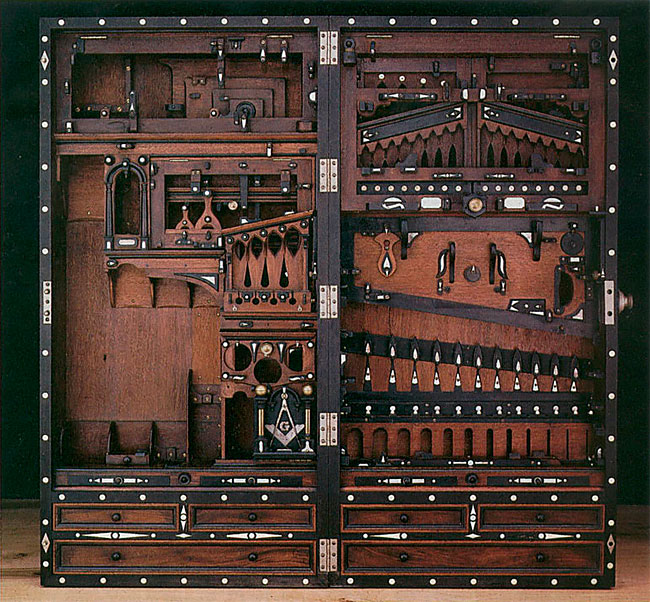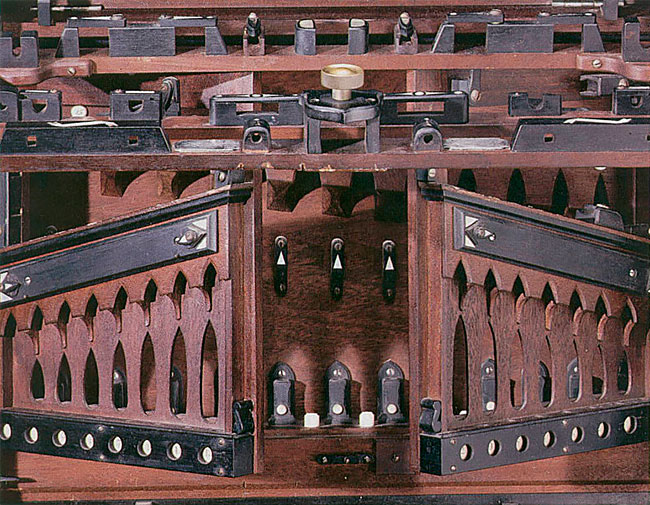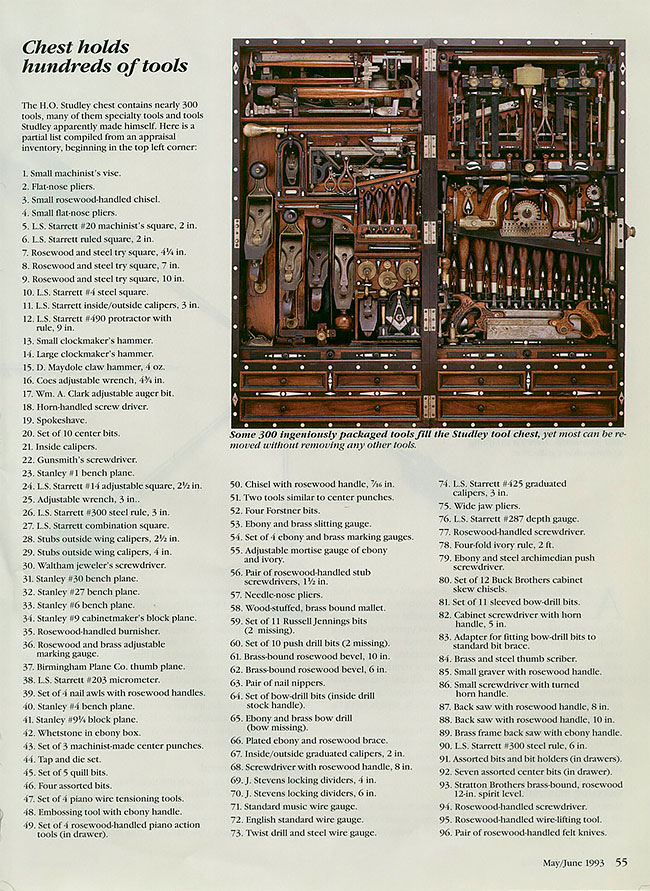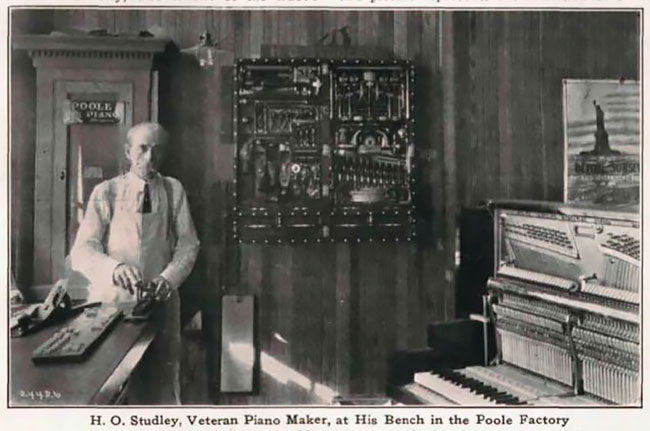This 19th-Century Tool Box Is Meticulously Designed To Hold 300 Tools
The look of tool chests can tell us much about workers and workplaces. While their purpose is to organize, carry, and protect tools, this chest also suggests what a worker thinks of himself and how society measures the value of his work.
h/t: phoenixmasonry, mymodernmet
If the workmanship in a tool chest is any indication of the maker’s talent, then the craftsmanship of Master carpenter and Freemason H. O. Studley must have been awe-inspiring. Brother Henry O. Studley (1838-1925) built this magnificent wall-hung chest while employed by the Poole Piano Company of Quincy, Massachusetts.
In an oak clamshell box adorned with rosewood, ebony, pearl and ivory, Studley kept both tools he made and a collection of the finest hand tools made prior to 1900, including a complete set of woodworking tools as well as machinist and stonemasonry tools. To pack the 300-plus tools into a case only 19 1/2 inches wide, 39 inches long and 9 1/2 inches deep, Studley devised a jigsaw puzzle arrangement of flip-up trays, fold-out layers and hidden compartments. Maine native Pete Hardwick originally owned the chest, which had been in his family since it was bequeathed to his grandfather by Studley.
Hardwick acquired the chest from his brother by trading a 1934 Ford sedan for it. A good trade? It would seem so: just one tool – the Stanley No. 1 plane housed in the ebony archway in the upper-left part of the chest – was appraised at $700.00 in 1993.

phoenixmasonry/Woodworking Magazine, May 1993
This tool chest was carefully restored to its original splendor and glory, loaned to the Smithsonian Institution, then displayed in the National Museum of American History as the centerpiece of woodworking and other tradesman tool chests. Studley’s chest then changed hands again (for an undisclosed $$$ amount) to another private collector.

phoenixmasonry/Woodworking Magazine, May 1993

phoenixmasonry/Woodworking Magazine, May 1993

phoenixmasonry/Woodworking Magazine, May 1993





